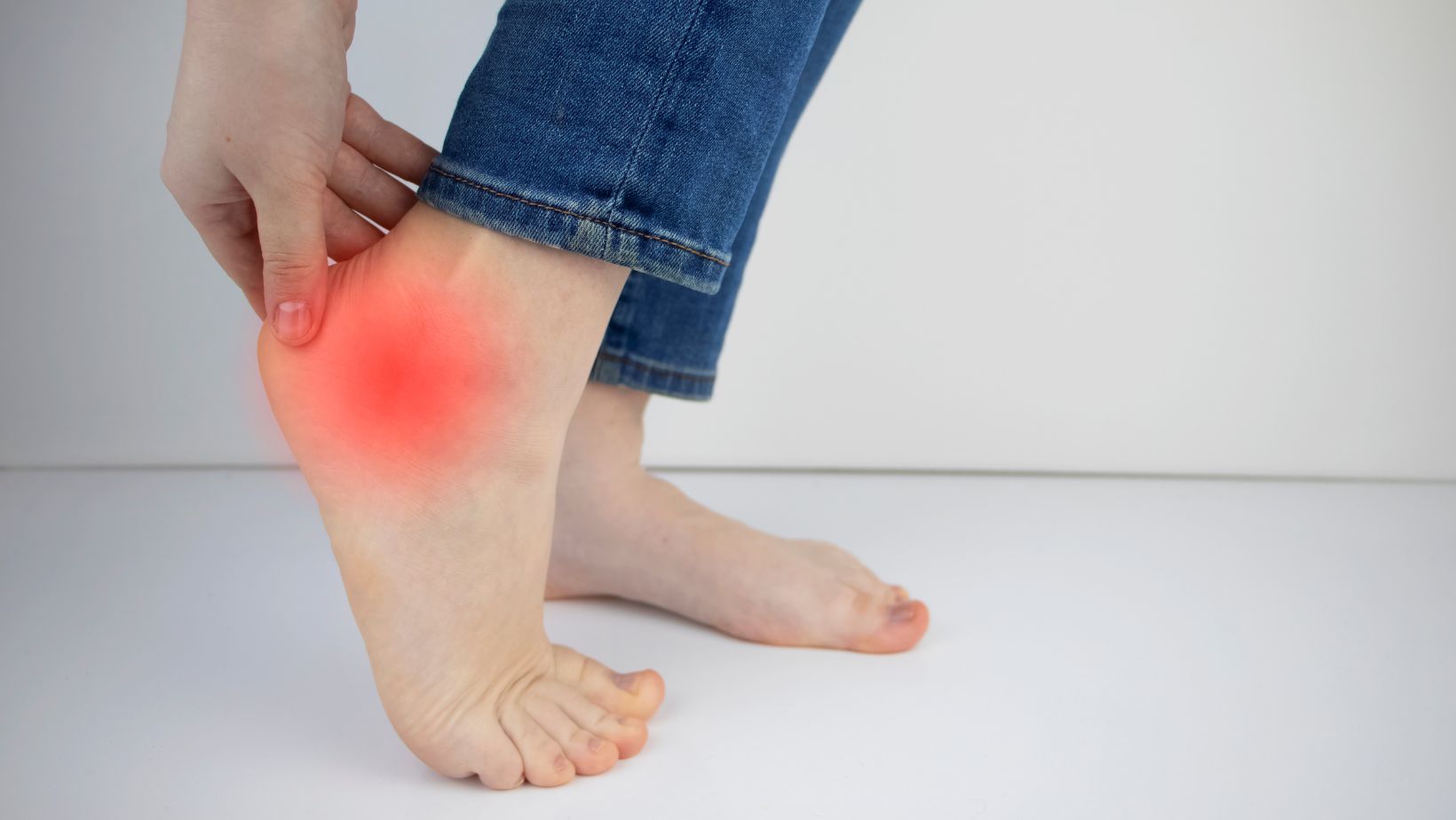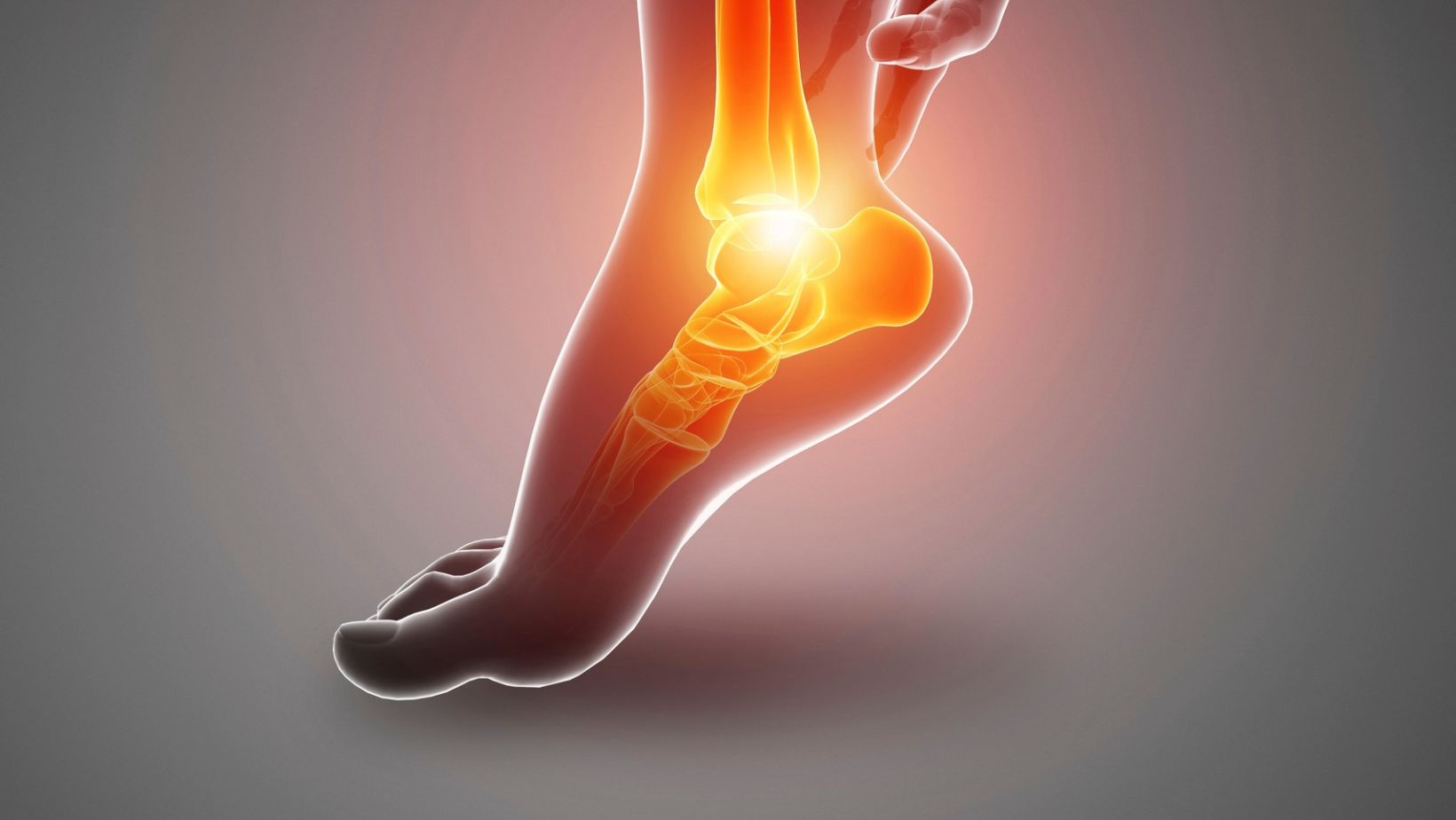One common issue that can have a big influence on everyday activities and quality of life is heel discomfort. Effective treatment and prevention of heel pain depend on an understanding of its underlying causes. Here are some of the most common causes and heel pain treatment options to alleviate discomfort.
Plantar Fasciitis
Cause: Plantar fasciitis is the inflammation of the plantar fascia, a thick band of tissue that runs along the bottom of your foot and connects your heel bone to your toes. It is often caused by repetitive strain and overuse, leading to micro-tears in the fascia.
Treatment:
- Rest and Ice: Resting the affected foot and applying ice packs can help reduce inflammation and pain.
- Stretching Exercises: Performing gentle stretches for the calf muscles and plantar fascia can improve flexibility and reduce tension.
- Supportive Footwear: Wearing supportive shoes with cushioned soles and adequate arch support can alleviate pressure on the heel.
- Orthotic Inserts: Custom orthotic inserts or heel cups may be prescribed to provide additional support and cushioning.
- Physical Therapy: In some cases, physical therapy techniques such as ultrasound or massage may be recommended to promote healing.
Achilles Tendonitis
Cause: Achilles tendonitis is inflammation of the Achilles tendon, which connects the calf muscles to the heel bone. It is often caused by overuse, excessive physical activity, or inadequate stretching before exercise.
Treatment:
- Rest and Ice: Resting the foot and applying ice packs can help reduce inflammation and pain.
- Stretching and Strengthening Exercises: Gentle stretching and strengthening exercises for the calf muscles and Achilles tendon can promote healing and prevent recurrence.
- Heel Lifts: Using heel lifts or wearing shoes with a slight heel elevation can reduce strain on the Achilles tendon.
- Physical Therapy: A physical therapist may prescribe specific exercises and techniques to improve flexibility and strength in the affected area.
- Orthotic Devices: Custom orthotic devices or shoe inserts may be recommended to provide additional support and cushioning.
Heel Spurs
Cause: Heel spurs are bony growths that develop on the underside of the heel bone. They often occur in conjunction with plantar fasciitis or as a result of repetitive strain and inflammation of the plantar fascia.
Treatment:
- Orthotic Inserts: Custom orthotic inserts or heel cups can help redistribute pressure away from the heel spur and provide cushioning.
- Stretching Exercises: Gentle stretching exercises for the calf muscles and plantar fascia can alleviate tension and reduce discomfort.
- Footwear Modifications: Wearing shoes with a supportive arch and cushioned heel can help reduce pressure on the heel spur.
- Corticosteroid Injections: In severe cases, corticosteroid injections may be recommended to reduce inflammation and alleviate pain.
- Surgery: Surgery to remove the heel spur may be considered if conservative treatments do not provide relief.
Bursitis
Cause: Bursitis is inflammation of the bursa, a fluid-filled sac that cushions and reduces friction between bones, tendons, and muscles around joints. In the heel, bursitis often affects the retrocalcaneal bursa, located between the Achilles tendon and the heel bone.
Treatment:
- Rest and Ice: Resting the foot and applying ice packs can help reduce inflammation and pain.
- Padding and Cushioning: Using heel pads or cushions can alleviate pressure on the affected area and promote healing.
- Anti-inflammatory Medications: To lessen pain and inflammation, doctors may prescribe nonsteroidal anti-inflammatory medicines, or NSAIDs.
- Physical Therapy: A physical therapist may recommend stretching and strengthening exercises to improve flexibility and reduce stress on the bursa.
- Corticosteroid Injections: Injections of corticosteroids into the affected bursa can provide relief from pain and inflammation.
Haglund’s Deformity (Pump Bump)
Cause: Haglund’s deformity, also known as pump bump, is a bony enlargement on the back of the heel bone. It is often caused by repeated pressure and friction from rigid or poorly fitting shoes.
Treatment:
- Footwear Modification: Wearing shoes with open backs or soft heel counters can reduce pressure on the heel bone.
- Padding: Using heel pads or cushions can alleviate pressure and reduce friction on the affected area.
- Ice Therapy: Applying ice packs to the heel can help reduce inflammation and pain.
- Physical Therapy: A physical therapist may recommend stretching exercises to improve flexibility and reduce tension in the Achilles tendon and calf muscles.
- Surgery: In severe cases, surgery may be considered to remove the bony prominence and relieve pressure on the Achilles tendon.
Sever’s Disease (Calcaneal Apophysitis)
Cause: Sever’s disease is a common cause of heel pain in children and adolescents, particularly those who are physically active. It occurs when the growth plate at the back of the heel becomes inflamed due to repetitive stress or overuse.
Treatment:
- Rest: Resting the affected foot and avoiding activities that exacerbate symptoms can help promote healing.
- Ice Therapy: Applying ice packs to the heel can help reduce inflammation and pain.
- Heel Cups or Orthotic Inserts: Using heel cups or custom orthotic inserts can provide cushioning and support to the heel.
- Stretching Exercises: Gentle stretching exercises for the calf muscles and Achilles tendon can alleviate tension and reduce discomfort.
- Footwear: Piecing on supportive shoes with sufficient arch support and cushioned soles might help ease heel pain.
Managing Heel Pain for Optimal Foot Health
Heel pain can have various causes, each requiring specific treatment approaches to alleviate discomfort and promote healing. It’s essential to consult with a healthcare professional or podiatrist for an accurate diagnosis and personalized treatment plan tailored to your individual needs.
By addressing the underlying cause of heel pain and following recommended treatments, you can improve your quality of life and maintain optimal foot health. Remember to practice preventive measures such as wearing appropriate footwear, stretching regularly, and maintaining a healthy weight to reduce the risk of recurring heel pain.



























